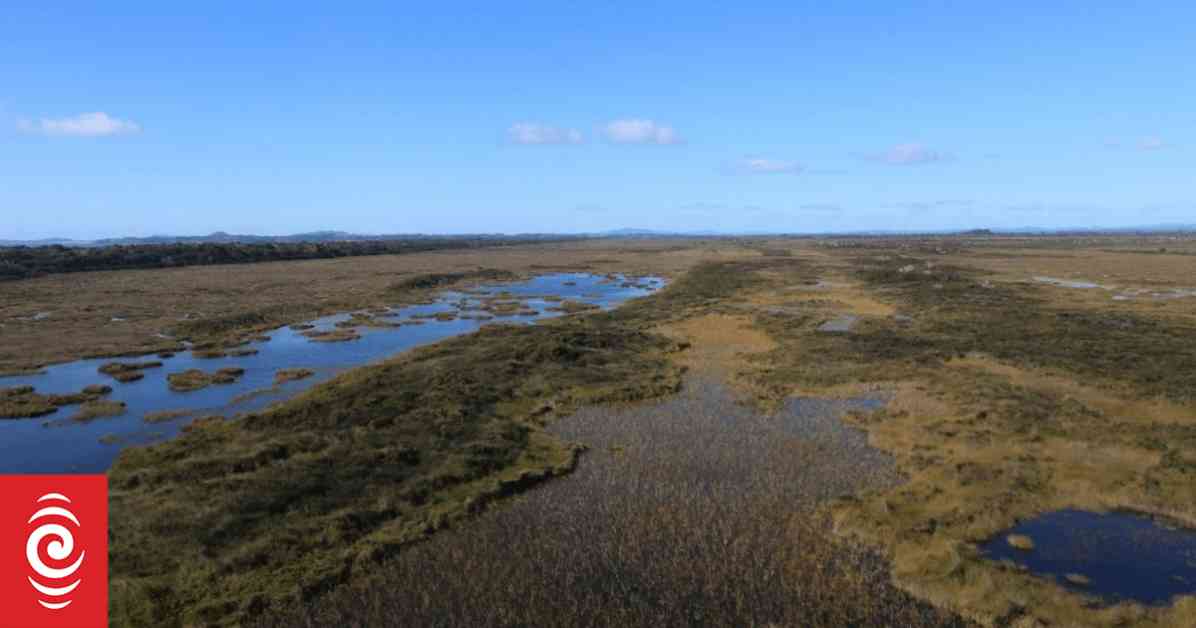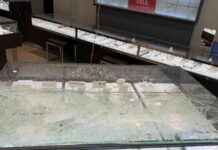Restoring Illegally Drained Kaimaumau Wetland: A Decade-Long Journey to Redemption
In a recent Environment Court ruling, it was decided that the Kaimaumau Wetland, located in Motutangi, Northland, must undergo immediate remedial work to reverse the damage caused by a watermelon farm. This 55-hectare area, one of the largest and most ecologically significant wetlands in Northland, was illegally cleared, sprayed with herbicide, drained with 600 meters of unauthorized channels, and trampled by cattle. The discovery of this devastation in 2023 by Northland Regional Council hydrologists led to a series of abatement notices and a subsequent inspection with police escort in August of the following year.
Amidst this heartbreaking development, the wetland restoration expert, Kevin Matthews, shed light on the daunting task that lies ahead. He emphasized the urgent need for action and the substantial financial investment required to revive this precious ecosystem. Matthews expressed cautious optimism, suggesting that with a sustained effort over the next 10 years, the wetland could recover, but not without a vigilant approach to controlling invasive species, particularly the Sydney golden wattle, which has a propensity to overtake the area and hinder the growth of native flora.
Challenges and Solutions in Restoration
Matthews underscored the critical importance of eradicating invasive weeds like gorse, hakea, and the pervasive Sydney golden wattle to allow native vegetation to thrive once again. He explained that the labor-intensive process of hand weeding these noxious plants demands a significant workforce, as using herbicides may impede the natural resurgence of native species. Replanting the area with hundreds of thousands of carefully selected plants and ensuring that water levels are maintained through the filling of drainage channels and the installation of weirs are vital steps in the restoration process.
The wetland’s historical and ecological significance cannot be overstated, as Matthews highlighted its role in the region’s water cycle and its support of a diverse array of wildlife, from rare plant species to elusive creatures like bitterns, mātātā, and geckos. Despite its ecological importance, many fail to grasp the vital functions of wetlands and the delicate balance they maintain in the ecosystem. Matthews lamented the dwindling presence of wetlands in Northland, with only 5% of the original wetlands remaining, a figure that falls below the national average of 10%.
Legal Mandates and Future Outlook
The Environment Court’s directives to the landowner include filling in drains, erecting barriers to prevent livestock intrusion, and restoring the native shrubland and wetland vegetation to its pre-2022 state. Additionally, the landowner must engage a qualified ecologist to formulate a comprehensive remediation and mitigation plan, oversee pest control efforts, monitor plant survival rates, and ensure wetland functionality for the next five years. While no fines were imposed as part of the enforcement order, non-compliance could lead to prosecution in the District Court, with potential hefty penalties.
In a 2015 study, the Kaimaumau-Motutangi Wetland was ranked as the second most significant freshwater wetland in Northland, showcasing a remarkable diversity of rare and threatened plant species, some of which are classified as nationally critical. Furthermore, the wetland complex’s extensive 1860-hectare expanse makes it the largest in the region. Despite facing challenges like a devastating fire in 2022, triggered by a vegetation burn-off that reignited due to strong winds, the wetland remains a beacon of hope for conservation efforts.
As we reflect on the plight of the Kaimaumau Wetland and the arduous journey that lies ahead, it is crucial to remember that the restoration of this invaluable ecosystem is not just a legal obligation but a moral imperative. Let us stand united in our commitment to safeguarding our natural heritage, preserving biodiversity, and ensuring a sustainable future for generations to come.

















